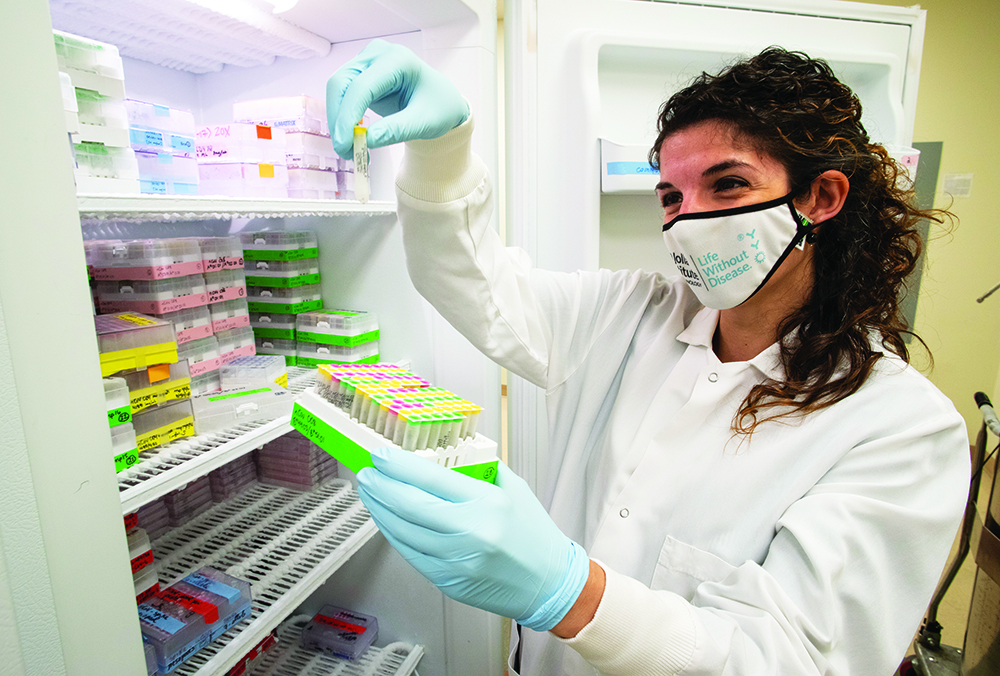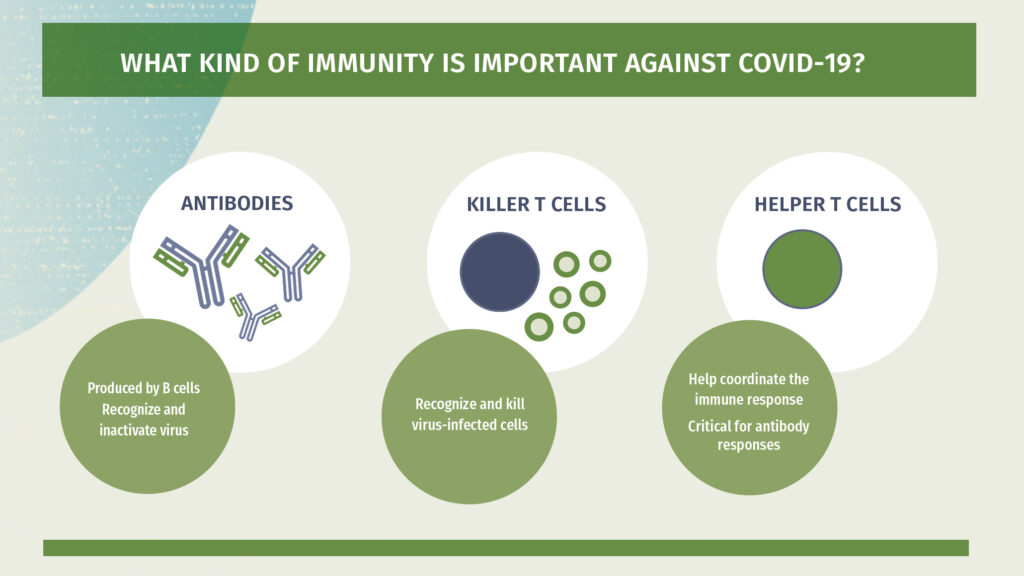
Alba Grifoni, Ph.D. Photo by Earnie Grafton
Most scientists don’t expect to end up in the news. Alba Grifoni, Ph.D., certainly didn’t. As a postdoctoral researcher (later promoted to instructor) at La Jolla Institute for Immunology (LJI), Dr. Grifoni had always worked on diseases that were global killers—but not headline news.
Then came COVID-19. In the early months of 2020, Dr. Grifoni worked closely with LJI Professor Alessandro Sette, Dr.Biol.Sci., to publish the first clues to how T cells target SARS-CoV-2. Their work inspired scientists around the world to consider how T cells, and not just antibodies, could drive immunity to the virus.
For many, the work gave hope that a COVID-19 vaccine would be possible. The New York Times, Washington Post, and many others began publishing updates from the research team.
“I just kept blinking my eyes. Am I reading this? Am I dreaming this? It was a shock,” says Dr. Grifoni. “They were acknowledging that our field of study was important in the fight against COVID.”
Dr. Grifoni comes from a family of medical doctors. As a girl growing up in Italy, she assumed she would go into medicine too. Yet as she took college courses, she started to wonder if a career as a doctor, where she’d see patients one by one, was the right fit. She started to consider studying immunology instead.
“What if I could do research that doesn’t just help one person in the moment but could help way more people—even after I’m not around anymore?” she says. “That was the path I wanted to follow.”
Dr. Grifoni had also grown up with several role models in the sciences. One was Rita Levi-Montalcini, M.D., the Italian neurobiologist who received a Nobel Prize in 1986 for the co-discovery of important nerve growth factors. “She showed me that being a woman should not hinder my aspirations,” says Dr. Grifoni.
The others were Dr. Sette and LJI Professor Bjoern Peters, Ph.D. The pair leads cutting-edge research in epitope identification. Put simply, they pinpoint the parts of a pathogen that provoke an immune response. “Everyone in immunology knows about Sette and Peters,” she says.
Dr. Grifoni earned her Ph.D. in immunology in 2014. Then she saw a job listing for a postdoctoral position in the Sette and Peters labs. “I thought, ‘You know what—I’m just going to apply for the postdoc. I’m going to give it a shot.’”
At LJI, Dr. Grifoni spearheads research that combines immunology and genetics. She uses bioinformatics tools to analyze viral genomes. This research can reveal which viral epitopes might be targeted by the immune system. Dr. Grifoni can then work with clinical samples to see exactly which potential targets are most important for fighting off the virus.
Her work has shed light on HIV, hepatitis B and C, Ebola virus, Zika, dengue, yellow fever, and many other pathogens. “I’ve lost count,” says Dr. Grifoni. “But the focus is always the same. I want to know how human T cells respond to viral infections.”
The hardest part of the job? “That I need to wait to see the data!” she says with a laugh.
“Some steps of my research require patience,” she adds. “You need to get the technical steps figured out. But once that’s set up, I want to go fast because I want to see the results.”
Dr. Grifoni’s persistence in figuring out key SARS-CoV-2 T cell epitopes was recognized last fall when she received the Embassy of Italy Award to Honor Young Italian Researchers for Research to Fight COVID-19 from the Italian Scientists and Scholars in North America Foundation (ISSNAF).
As an ISSNAF winner, Dr. Grifoni had the chance to present her work virtually to leading Italian scientists and speak with the Italian media.
“It meant a lot to have my science recognized in the U.S. and Italy,” says Dr. Grifoni. “It gave me the opportunity to share my research not only with other scientists in the field but with the general Italian population, in my own language, and deliver important information for them to understand the impact of SARS-CoV-2 and the importance of vaccination.”

Dr. Grifoni is the kind of researcher who can easily explain her work to a non-scientific crowd, and that task has gotten even easier during the pandemic. “Now, when you talk to the average person about T cells, they know what those are,” says Dr. Grifoni.
Going forward, Dr. Grifoni wants to help people understand the same cutting-edge research techniques and sense of urgency we’ve had with COVID-19 are needed to fight other global threats, such as dengue and chikungunya. She says researchers need to better understand how T cells recognize these viruses. They need to know how to balance T cell responses with antibody responses, and how to spark the right kind of immune responses with a vaccine.
“I find the need to simplify the science when speaking with a wide audience, but sometimes it would be good for people to really understand the complexity of the research,” says Dr. Grifoni.
While much more work is to be done, Dr. Grifoni has already achieved what she’d hoped for. Her research has affected many other people and inspired new lines of research.
“I’ve had a great passion to guide me,” she says. Thinking back to her university days, she remembers feeling discouraged, that she wouldn’t make big contributions to science. Dr. Grifoni has advice for young scientists today.
“To them I’d say, ‘Be brave. Throw yourself into the sky. No matter where you end up, you will definitely enjoy the journey—and if your work can also help others, that will be the best reward you can aim for.’”


